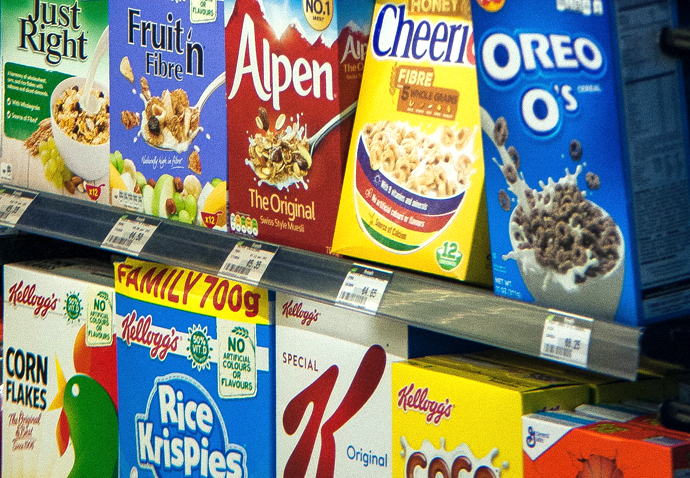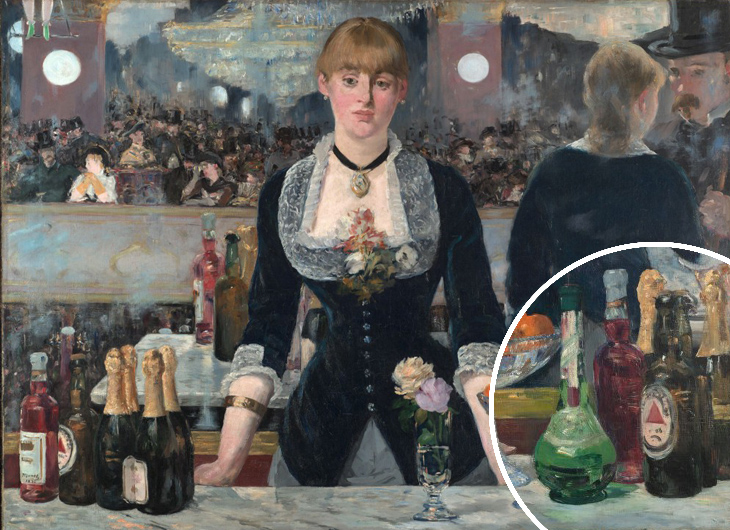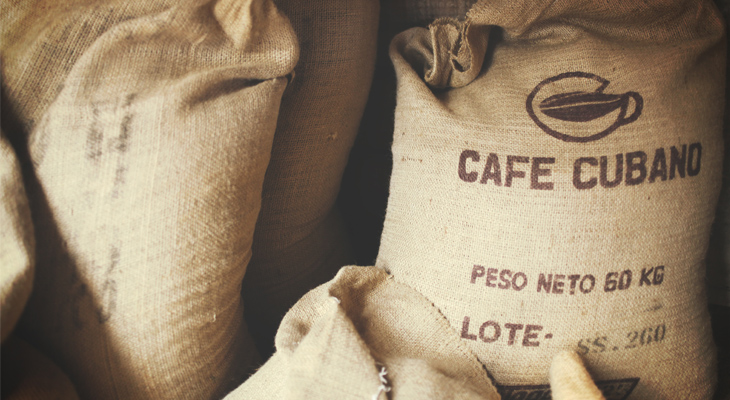
New Year’s Eve, London, 1875. An employee of the Bass Brewery stands at the head of a queue, ready to register the company’s logo under the soon to implemented Trade Marks Registration Act.
On the stroke of midnight, the famous Bass red triangle becomes the world’s first registered trademark. Protecting the company from thousands of imitators up and down the land marking their own, inferior brews the same way.

The Bass red triangle was the world’s first registered trademark. Was it also the first example of product placement, in this painting form 1882?
If there is a moment when the idea of The Brand as a commercial property was born, then surely this is it.
Yet even now, 145 years later, some people struggle to answer the question ‘What is a brand?’ Often, people in our industry who should know better.
So you’ll still hear experienced marketers talking about their ‘brand’ in terms of their logo, namestyle or corporate design guidelines. But what Michael Bass understood then, and what so many are missing today, is this:
A red Triangle, or any other kind of mark, isn’t a brand in itself. It’s a representation of a brand and all the values, emotions and qualities we associate with it. A clear, recognisable shorthand that makes it easy to choose our favourite brand from dozens, even hundreds of similar products.
When does a product become a brand?
In answering ‘What is a brand?’, it’s essential to understand the difference between a product and a brand.
Anybody can make a product. All it takes is the money, materials, labour and knowledge, and you can turn something out that’s so similar to the market leader that only the most expensive IP lawyer could tell the difference.
But what you won’t have is a brand.
You won’t have a connection with your customers built up over years of experience and reinforced by carefully crafted brand messaging. You won’t have a reputation that stops your market share being stolen by other ‘me too’ products, or sustains a premium price customers are willing to pay, even in hard times.
And you won’t occupy a place in the mind of your customers that makes your product first choice whenever they’re in the market to buy.
You’ll often hear marketers referring to such advantages as ‘brand equity.’ The things that make a brand valuable in its own right, and the reason companies are so ready to invest in branding and to buy and sell successful brands for such astronomical prices.
Not that brand equity is anything new. John Stuart, Chairman of the Quaker Oats Company, summed up the value of brands back in the 1940s when he said: “If this business were split up, I would give you the land and bricks and mortar, and I would take the brands and trademarks, and I would fare better than you.”
Prescient indeed.
When products are part of the brand
So perhaps the shortest answer to the question ‘What is a brand?’ is that it’s a way of turning even a basic product into a desirable, unique offering. And along the way, adding many times the material value of the product itself to your business bottom line.
But wait a minute. Does that mean we can turn anything into a premium brand, given the right branding programme and enough money? Is there no connection between a product’s features and benefits and its appeal to customers?
We all know from experience that’s not the case. And sure enough, diving deeper shows us the real relationship between products and brands is more complicated than that.
If product features don’t play a part in buyer choice, why would companies spend millions researching, developing and bringing product innovations to market? Why do brands like Mercedes Benz constantly introduce new technology in their cars? Why do software companies like Adobe continuously evolve their products, pushing out updated versions every week or two?
It’s because they know offering a benefit others can’t drives sales up, even if it’s just for the short term. But equally, they know any unique product feature can and will be copied. That before long, their product will once again be on a par with the rest as competitors catch up.
And it’s here the value of their brand makes itself felt. Hydrogen fuel cell technology from Mercedes Benz – a brand trusted for its technical standards for over a century – is surely better than the same technology from Brand X. A new 3D graphics package from the market leader Adobe is bound to be a superior option to the same offering from unknown Brand Y.
Yes, product benefits matter. But in the broader context of a brand, they matter much more.
Finding brand value in commodity
The marketing expert Kevin Keller describes the relationship between products and brands this way:
“A brand is… more than a product, because it can have dimensions that differentiate it in some way from other products designed to satisfy the same need. These differences may be rational and tangible, related to product performance of the brand; or more symbolic, emotional, and intangible, related to what the brand represents.”
Of course, for Mercedes, Adobe and others, innovation is an integral part of the brand. But where do other, less innovative companies stand, operating in sectors where there is little difference between competing products?
These are the commodity markets where products are so generic there is nothing to choose between them except the price. But competing on price is a recipe for disaster. A race to the bottom that only those who can afford to undercut the rest can win.
The alternative? To differentiate your generic product by turning it into a brand that commands a premium price.
The more ‘me too’, the more crucial the branding
It’s in these ‘me too’ sectors that some of the most famous and enduring brands have been built. And where the power of ‘pure’ branding – as opposed to product positioning through a real point of difference – proves its worth in brands that can add millions to the corporate value of brand owners.

In ‘me-too’ commodity sectors, a strong brand is absolutely essential
Marketers achieve this in one of two ways. The first is by creating a brand ‘story’ that convinces consumers there is a meaningful difference between their product and its competitors. It can be a provenance story (‘Fresh from the farm’), a quality story (‘Only the finest ingredients make it in’), or anything else that suggests a point of difference in the mind of the customer.
The second is by creating associations completely removed from the product, and which instead focus on pure image, or which reflect the customer’s self-image back at them.
This second approach is what marketers in the brewing industry mean by customers ‘drinking the advertising’ when they choose between practically identical mid-market lagers. Usually based on which one most closely shares their sense of humour in its TV spots.
But Kevin Keller, in his book ‘Strategic Brand Management: Building, Measuring and Managing Brand Equity’ offers us an even more striking example of the power of ‘pure’ branding:
Diamonds aren’t the first thing that spring to mind when we think about commodities. But that’s exactly what they are, though a lot more expensive than most.
Yet one diamond merchant created a brand so powerful it now has a 33% share of the world market. And a strapline that has become embedded in the English language.

You know what a diamond is. How De Beers turned the world’s most expensive commodity into a brand.
De Beers’ ‘A Diamond is Forever’ changed the way people thought about diamonds by attaching lasting emotion and symbolic meaning to their purchase. Instead of being an expensive gift, they became something more. A symbol of undying love that was many, many times more precious to buyer and recipient alike.
From a tiny fragment of carbon, crushed underground for billions of years, to one of the most iconic brands of all time. We can’t think of a better answer to the question ‘What is a brand?’
What is a brand? Intermedia has the answer
A brand is a decisive commercial advantage. Perhaps the most powerful commercial advantage you have at your disposal.
We know it’s not always easy to convince sceptical CEOs and FDs of that. Especially when budgets are being tightened, and short-term tactics seem to offer a much quicker way of delivering sales.
So we’ll help you make your case and build a brand that delivers bottom-line results.
We won’t do it by starting with your logo, though. That’s way down the line.
Instead, we’ll apply our strategic marketing framework to give us a clear picture of where you stand now. And a roadmap for where you can take your brand to leverage its strengths to maximum effect.
We’ll work with you on your brand vision, mission and value proposition. On the key messaging that most resonates with your audience. Not by plucking fancy words out of thin air. But through rigorous external research and consultation that justify our outputs every step of the way.
So when you need advice and guidance on something as important as branding, talk to the experts. Talk to Intermedia.
Originally published January 9, 2023 09:45am, updated April 19, 2023
